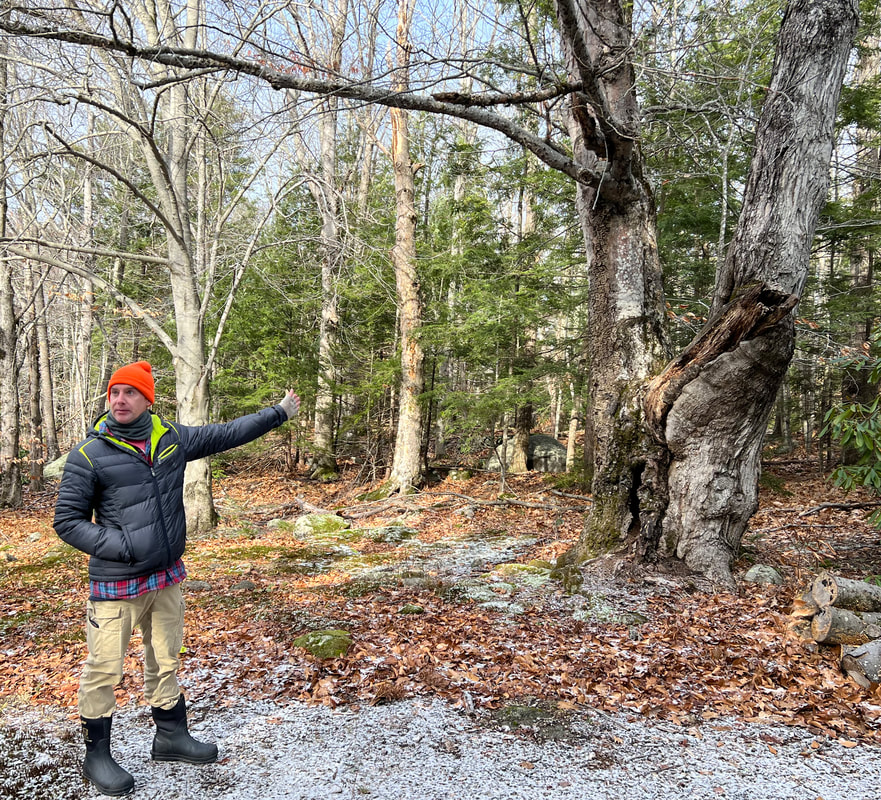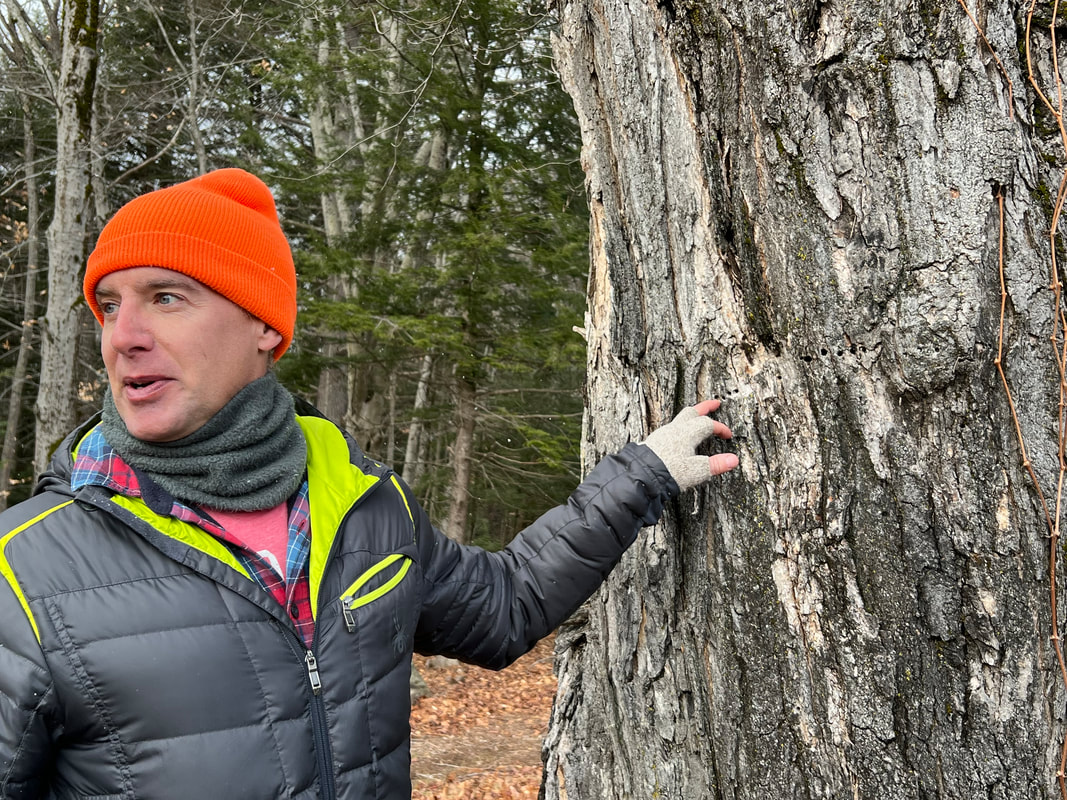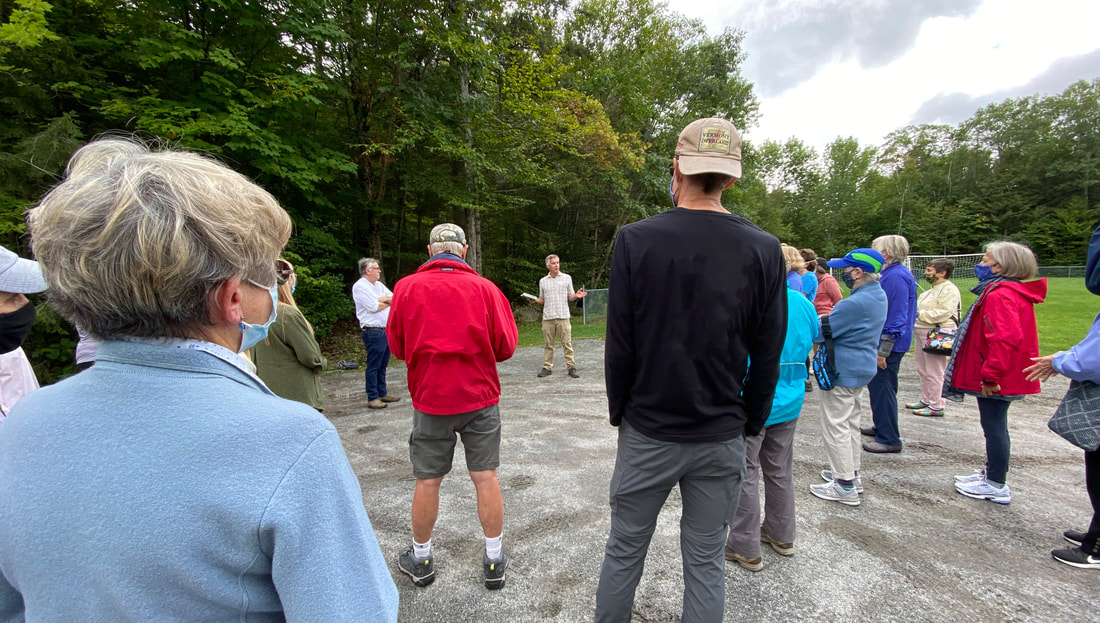Blustery wind and impending snow didn't stop a hearty group of 20 folks from attending December’s First Thursday Hike at The Fells. I learned so much great information from Dode Gladders, Forestry Field Specialist with UNH Cooperative Extension who led the walk. I remembered Dode from attending his terrific deciduous tree identification workshop for the garden club in September of 2021 so knew I was in for a great talk.
Dode covered too much to explain here but I wanted to share two interesting stories. We stopped by a very strange looking tree with a dying left side and a healthy right side. Dode explained that a beech tree grew up so closely to a sugar maple that they became somewhat entwined. The beech was dying because of a multi-pronged attack. First its bark was drilled into by beech bark scales, invasive insects that have been spreading slowly from Nova Scotia since they were inadvertently introduced in the 1890s. They can’t fly but have been walking south and have reached our area. The scales have mouths like hypodermic syringes which they use to penetrate the bark and suck out some sap. That doesn’t cause a problem to the beech tree in itself but two types of Neonectria fungi gang up to infiltrate those tiny holes and cause thousands of little infections that eventually kill the tree. As Dode explained, human diseases are mostly caused by bacteria and viruses while most tree infections are caused by fungi.
At a sugar maple tree, Dode pointed out a line of small round holes created by the yellow bellied sapsucker. This woodpecker pounds a line of the holes then flies off for a while giving the sap time to ooze out which attracts insects. When the woodpecker returns, it enjoys the protein rich insects followed by a sweet sap dessert.
The John Hay Estate at The Fells runs the First Thursday hikes all year round and is free to members. For non-members the hike is included with the cost of admission. There are different leaders and different walks each month.
Dode covered too much to explain here but I wanted to share two interesting stories. We stopped by a very strange looking tree with a dying left side and a healthy right side. Dode explained that a beech tree grew up so closely to a sugar maple that they became somewhat entwined. The beech was dying because of a multi-pronged attack. First its bark was drilled into by beech bark scales, invasive insects that have been spreading slowly from Nova Scotia since they were inadvertently introduced in the 1890s. They can’t fly but have been walking south and have reached our area. The scales have mouths like hypodermic syringes which they use to penetrate the bark and suck out some sap. That doesn’t cause a problem to the beech tree in itself but two types of Neonectria fungi gang up to infiltrate those tiny holes and cause thousands of little infections that eventually kill the tree. As Dode explained, human diseases are mostly caused by bacteria and viruses while most tree infections are caused by fungi.
At a sugar maple tree, Dode pointed out a line of small round holes created by the yellow bellied sapsucker. This woodpecker pounds a line of the holes then flies off for a while giving the sap time to ooze out which attracts insects. When the woodpecker returns, it enjoys the protein rich insects followed by a sweet sap dessert.
The John Hay Estate at The Fells runs the First Thursday hikes all year round and is free to members. For non-members the hike is included with the cost of admission. There are different leaders and different walks each month.




 RSS Feed
RSS Feed